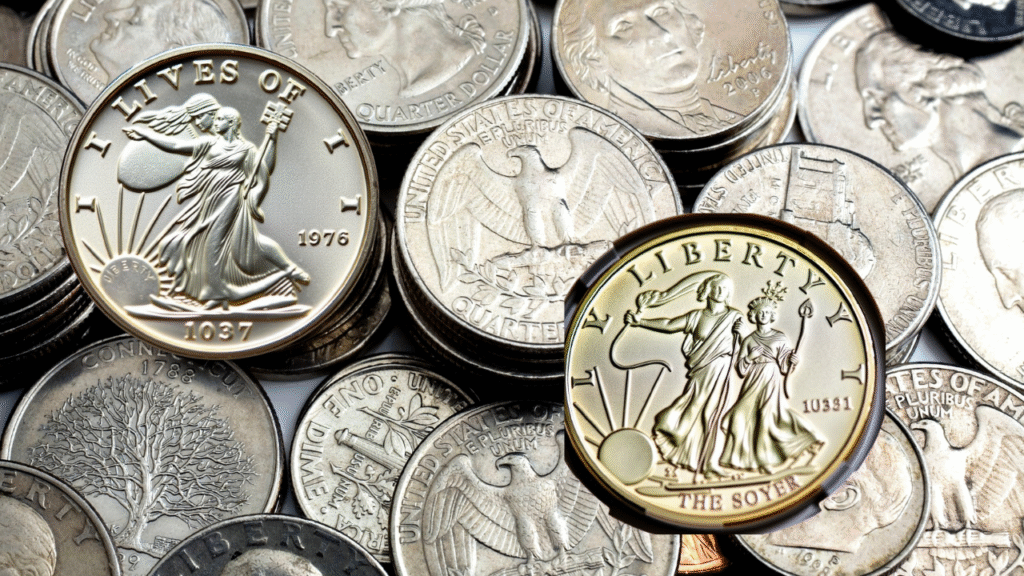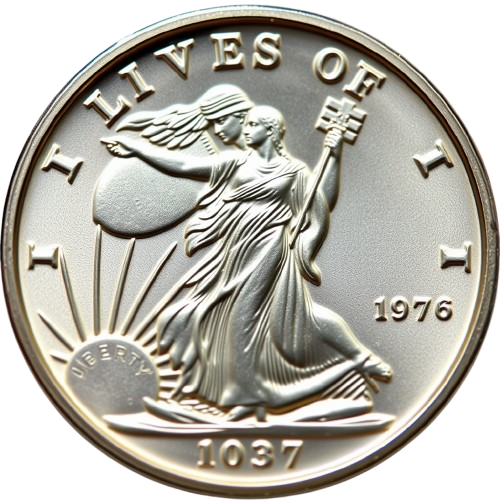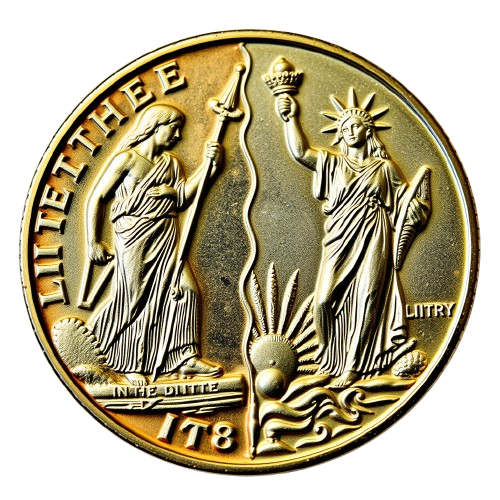For decades now, this puzzle has been a source of intrigue to numerous generations of numismatists from both sides of the Atlantic. One cannot ignore the striking similarity between Oscar Roty’s (1846-1911) “The Sower” and “The Walking Liberty” by Adolph Alexander Weinman (1870-1952). Nevertheless, thus far, no concrete evidence has been discovered that ambiguously confirms what can be understood as decidedly probable: that Weinman’s acclaimed design was largely under the influence of Roty’s.
Recently, a new collaboration brought the two masterworks closer than ever. A project between French and American artists commissioned by the Monnaie de Paris celebrates the two nations’ enduring friendship. Conceived as a three-year project, the series will kick-off in 2024 with the simultaneous coinage that will feature designs of both Roty and Weinman’s. It will end in 2026 with a collection of French coins that will celebrate the 250th anniversary of the United States Declaration of Independence.

For the 2024 coins, the chosen designs celebrate each nation’s national symbol of Liberty. An obverse based on “Walking Liberty” was produced by Joaquín Jimenez, Chief Engraver of the Paris Mint. Jimenez’s engraved design depicts Lady Liberty as a young woman holding the American flag behind her and a bald eagle with outstretched wings soaring above her head. Interestingly, the stars are arranged in a circular pattern on the background of the composition.
Underneath appears the new interpretation on “The Sower” offered by former U.S. Mint Chief Engraver and American numismatic legend John Mercanti. The design shows a figure sprinkling the seeds of Liberty, Equality, and Fraternity as wheat stalks flank her and the French flag flies in the background. The year “2024” and the value are represented on the face of the coin, as are Mercanti’s initials and the Monnaie de Paris mint mark, a cornucopia (Horn of Plenty).
The 2024 six-coin series was produced at the Paris Mint as limited edition gold and silver high-relief proofs. Silver coins with a 0.999 fineness were produced with the face values: 20 euro (37 millimeters; 31.1 grams; mintage: 3000), 25 euro (41 millimeters; 62.21 grams; mintage 2000), and 50 euro (50 millimeters; 155.5 grams; mintage 1000). Coins with respective face values of 10 euro (15 millimeters; 3.11 grams; mintage 1000), 200 euro (34 millimeters; 31.1 grams; mintage 300), and 500 euro (50 millimeters; 155.5 grams; mintage 50) were produced in 0.999 gold. (See a coin from the series on page 35 in the COTY 100.)
The creation of The Sower and The Walking Liberty
Roty was a French medallion sculptor, arguably one of the peaks of fame in artists’ ranks during the period of submission. This creation was popularly called “The Sower” in English. It was originally intended by Roty in 1887 as a proposal for a prize medal ordered by the French Ministry of Agriculture. Years later, in 1896, the Ministry of Finance of France asked him to present his designs for what would be the new coinage of the country. Roty went back to “The Sower” and turned the original robust peasant into a slimmer version of France’s iconic symbol, Marianne, wearing a Phrygian cap.

Selected for engraving, that design was the first used on the obverse of the 50-centime silver coin in 1897. Since then, it has appeared in a myriad of coins, including the current euro currency of France. Roty’s design refers to a dynamic Republic that, according to the art historian Cornelius Vermeule in “Numismatic Art in America: Aesthetics of the United States Coinage,” “…seeds the fertile soil with new ideas that, if treated with care, may one day germinate.” It is worth noting that the depiction is more symbolic than realistic since, as Robert Albright has pointed out, seeding is not performed against the wind.
Near the end of 1915, plans were laid in the United States to produce subsidiary coins with new designs, and several sculptors were invited to submit proposals. Among them was the German-born sculptor Weinman, who offered up a design that would come to be called “Walking Liberty.” In 1916, it would be decided that Weinman’s flying figure would share the obverse of the half-dollar silver coin with the date 1916. Though the coins were minted from 1916 to 1947, subsequent medals, coins, and awards would repeat used versions of Weinman’s design. The Treasury Secretary, William G. McAdoo, defined the design in his 1916 annual report as “… a full-length of Liberty, the folds of the Stars and Stripes flying to the breeze as a background, progressing in full stride toward the dawn of a new day, carrying branches of laurel and oak, symbolical of civil and military glory. The hand of the figure is outstretched in bestowal of the spirit of Liberty.”

Most scholars believe the resemblance of Weinman’s obverse to Oscar Roty’s design is not accidental. Neither of these men has ever met, but Weinman was thought to be inspired by the works of Roty. Even so, as Vermeule points out in his text, Weinman’s “Walking Liberty” cannot simply be regarded as a “slavish copy” of “The Sower.”
